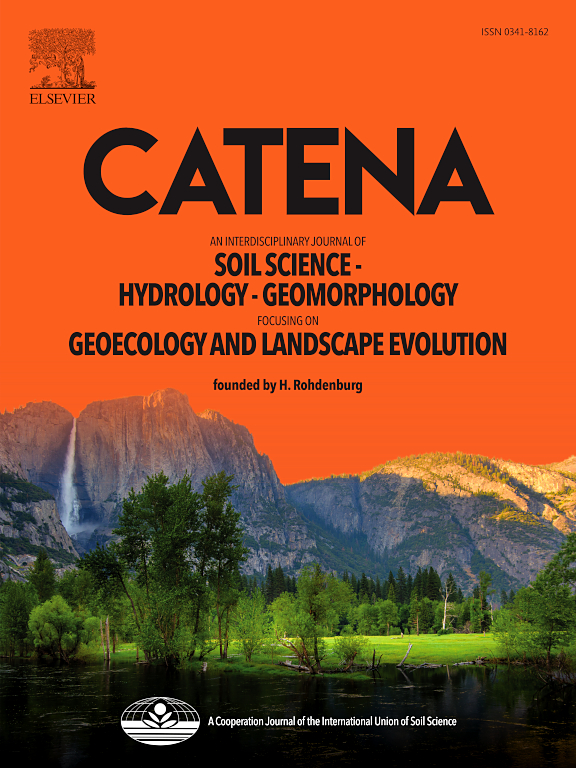Vegetation and climate change during the Miocene revealed by the pollen record of Otindag Dune field, northern China
IF 5.4
1区 农林科学
Q1 GEOSCIENCES, MULTIDISCIPLINARY
引用次数: 0
Abstract
Elucidating the processes and trends of aridification in inland Asia holds significant theoretical and practical importance for the evolution of the East Asian monsoon. The Otindag Dune field, situated in a semi-arid region of northern China, there is a scarcity of studies on the Neogene aridification history. Based on pollen analysis of the BYNE section, a red clay profile, combined with biomization method and coexistence approach, this study presents a reconstruction of vegetation and climate from∼17.35 to 16.12 Ma. The pollen records indicate that during∼17.35–16.12Ma, herbaceous plants dominated by Artemisia, Amaranthaceae, and Humulus were more prosperous. Tree plants were dominated by the warm and humidity-loving Quercus, Betula, and Juglandaceae. Overall, the climate was relatively warm-wet, corresponding to the Middle Miocene Climatic Optimum (MMCO). Accompanied by fluctuations in moisture levels, vegetation primarily comprised temperate forest steppe, temperate steppe, and temperate mixed forest. Through comprehensive analysis of pollen records from the late Miocene lacustrine deposit, the decreasing trends in the Artemisia/Chenopodiaceae (A/C) ratio and the arboreal to non-arboreal pollen (AP/NAP) ratio indicated a shift from humid to arid conditions, as well as the weakening of the East Asian summer monsoon (EASM) from the middle to late Miocene. The coexistence approach suggests that mean annual precipitation during the middle Miocene exceeded that of the late Miocene by approximately 100mm, further supporting the notion that the middle Miocene was wetter. A comparison of pollen records of the Otindag Dune field with those from the Tibetan Plateau and Loess Plateau, along with other Asian climate records, reveals significant consistency. The intensification of inland aridification in the Otindag Dune field throughout the Miocene is likely influenced by global cooling and uplift of the Tibetan Plateau, but the tectonic spreading of the Central Asian Orogenic Belt and North China Plate also contributed.
求助全文
约1分钟内获得全文
求助全文
来源期刊

Catena
环境科学-地球科学综合
CiteScore
10.50
自引率
9.70%
发文量
816
审稿时长
54 days
期刊介绍:
Catena publishes papers describing original field and laboratory investigations and reviews on geoecology and landscape evolution with emphasis on interdisciplinary aspects of soil science, hydrology and geomorphology. It aims to disseminate new knowledge and foster better understanding of the physical environment, of evolutionary sequences that have resulted in past and current landscapes, and of the natural processes that are likely to determine the fate of our terrestrial environment.
Papers within any one of the above topics are welcome provided they are of sufficiently wide interest and relevance.
 求助内容:
求助内容: 应助结果提醒方式:
应助结果提醒方式:


